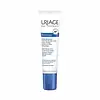What's inside
What's inside
 Key Ingredients
Key Ingredients

 Benefits
Benefits

 Concerns
Concerns

 Ingredients Side-by-side
Ingredients Side-by-side

Water
Skin ConditioningDicaprylyl Ether
EmollientButyrospermum Parkii Butter
Skin ConditioningCetearyl Isononanoate
EmollientGlycerin
HumectantCetyl Alcohol
EmollientPropanediol
SolventSteareth-2
EmulsifyingSteareth-21
Cleansing1,2-Hexanediol
Skin ConditioningGlyceryl Behenate
EmollientSodium Dextran Sulfate
Gel FormingSodium Hyaluronate
HumectantChlorphenesin
AntimicrobialPolyacrylate-13
Acrylates/C10-30 Alkyl Acrylate Crosspolymer
Emulsion StabilisingSafflower Oil/Palm Oil Aminopropanediol Esters
Skin ConditioningTocopheryl Acetate
AntioxidantXanthan Gum
EmulsifyingPolyisobutene
O-Cymen-5-Ol
AntimicrobialPolysorbate 20
EmulsifyingSorbitan Isostearate
EmulsifyingSodium Hydroxide
BufferingPolyglyceryl-10 Stearate
Skin ConditioningTriethyl Citrate
MaskingPolyglyceryl-6 Behenate
Emulsion StabilisingTocopherol
AntioxidantBehenic Acid
CleansingCeramide NP
Skin ConditioningCetearyl Alcohol
EmollientCholesterol
EmollientGlyceryl Stearate
EmollientLactic Acid
BufferingCeramide Ns
Skin ConditioningCeramide EOP
Skin ConditioningCeramide AP
Skin ConditioningSodium Cetearyl Sulfate
CleansingWater, Dicaprylyl Ether, Butyrospermum Parkii Butter, Cetearyl Isononanoate, Glycerin, Cetyl Alcohol, Propanediol, Steareth-2, Steareth-21, 1,2-Hexanediol, Glyceryl Behenate, Sodium Dextran Sulfate, Sodium Hyaluronate, Chlorphenesin, Polyacrylate-13, Acrylates/C10-30 Alkyl Acrylate Crosspolymer, Safflower Oil/Palm Oil Aminopropanediol Esters, Tocopheryl Acetate, Xanthan Gum, Polyisobutene, O-Cymen-5-Ol, Polysorbate 20, Sorbitan Isostearate, Sodium Hydroxide, Polyglyceryl-10 Stearate, Triethyl Citrate, Polyglyceryl-6 Behenate, Tocopherol, Behenic Acid, Ceramide NP, Cetearyl Alcohol, Cholesterol, Glyceryl Stearate, Lactic Acid, Ceramide Ns, Ceramide EOP, Ceramide AP, Sodium Cetearyl Sulfate
Water
Skin ConditioningButylene Glycol
HumectantIsononyl Isononanoate
EmollientPropanediol
Solvent1,2-Hexanediol
Skin ConditioningDimethicone
EmollientPolymethyl Methacrylate
Tromethamine
BufferingAcrylates/C10-30 Alkyl Acrylate Crosspolymer
Emulsion StabilisingPhenoxyethanol
PreservativeSodium Dextran Sulfate
Gel FormingXylitylglucoside
HumectantSodium Acrylate/Sodium Acryloyldimethyl Taurate Copolymer
Emulsion StabilisingAnhydroxylitol
HumectantIsohexadecane
EmollientGlycerin
HumectantTrehalose
HumectantUrea
BufferingXylitol
HumectantO-Cymen-5-Ol
AntimicrobialPolysorbate 80
EmulsifyingGlucose
HumectantPentylene Glycol
Skin ConditioningSerine
MaskingSorbitan Oleate
EmulsifyingAlgin
MaskingCaprylyl Glycol
EmollientDisodium Phosphate
BufferingGlyceryl Polyacrylate
Pullulan
Sodium Hyaluronate
HumectantPotassium Phosphate
BufferingWater, Butylene Glycol, Isononyl Isononanoate, Propanediol, 1,2-Hexanediol, Dimethicone, Polymethyl Methacrylate, Tromethamine, Acrylates/C10-30 Alkyl Acrylate Crosspolymer, Phenoxyethanol, Sodium Dextran Sulfate, Xylitylglucoside, Sodium Acrylate/Sodium Acryloyldimethyl Taurate Copolymer, Anhydroxylitol, Isohexadecane, Glycerin, Trehalose, Urea, Xylitol, O-Cymen-5-Ol, Polysorbate 80, Glucose, Pentylene Glycol, Serine, Sorbitan Oleate, Algin, Caprylyl Glycol, Disodium Phosphate, Glyceryl Polyacrylate, Pullulan, Sodium Hyaluronate, Potassium Phosphate
Ingredients Explained
These ingredients are found in both products.
Ingredients higher up in an ingredient list are typically present in a larger amount.
1,2-Hexanediol is a synthetic liquid and another multi-functional powerhouse.
It is a:
- Humectant, drawing moisture into the skin
- Emollient, helping to soften skin
- Solvent, dispersing and stabilizing formulas
- Preservative booster, enhancing the antimicrobial activity of other preservatives
Acrylates/C10-30 Alkyl Acrylate Crosspolymer is a synthetic polymer. It is used to thicken and improve the texture of products. Due to its properties, it can prevent water and oil ingredients from separating.
Glycerin is already naturally found in your skin. It helps moisturize and protect your skin.
A study from 2016 found glycerin to be more effective as a humectant than AHAs and hyaluronic acid.
As a humectant, it helps the skin stay hydrated by pulling moisture to your skin. The low molecular weight of glycerin allows it to pull moisture into the deeper layers of your skin.
Hydrated skin improves your skin barrier; Your skin barrier helps protect against irritants and bacteria.
Glycerin has also been found to have antimicrobial and antiviral properties. Due to these properties, glycerin is often used in wound and burn treatments.
In cosmetics, glycerin is usually derived from plants such as soybean or palm. However, it can also be sourced from animals, such as tallow or animal fat.
This ingredient is organic, colorless, odorless, and non-toxic.
Glycerin is the name for this ingredient in American English. British English uses Glycerol/Glycerine.
Learn more about GlycerinThis ingredient is more commonly known as IPMP or Isopropyl Methylphenol. It is a preservative and has antimicrobial properties.
According to the EPA, this ingredient is allowed for use in cleansers, creams, powders, bath products, toothpaste, perfume, and more.
Propanediol is an all-star ingredient. It softens, hydrates, and smooths the skin.
It’s often used to:
Propanediol is not likely to cause sensitivity and considered safe to use. It is derived from corn or petroleum with a clear color and no scent.
Learn more about PropanediolSodium Dextran Sulfate is a type of sulfate.
Sodium Hyaluronate is hyaluronic acid's salt form. It is commonly derived from the sodium salt of hyaluronic acid.
Like hyaluronic acid, it is great at holding water and acts as a humectant. This makes it a great skin hydrating ingredient.
Sodium Hyaluronate is naturally occurring in our bodies and is mostly found in eye fluid and joints.
These are some other common types of Hyaluronic Acid:
Learn more about Sodium HyaluronateWater. It's the most common cosmetic ingredient of all. You'll usually see it at the top of ingredient lists, meaning that it makes up the largest part of the product.
So why is it so popular? Water most often acts as a solvent - this means that it helps dissolve other ingredients into the formulation.
You'll also recognize water as that liquid we all need to stay alive. If you see this, drink a glass of water. Stay hydrated!
Learn more about Water